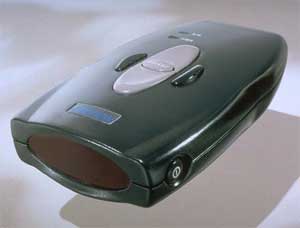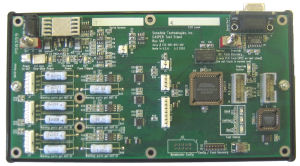PROJECTS
PDF Faxview: A Pocket-Sized Fax Machine
System Overview
When Refection Technology went to design its FaxView product, it contracted Bolton Engineering to help define the architecture and develop the detailed design. Early in the project, Reflection and Bolton determined that using a dedicated processor to perform the fax decompression would be too expensive. Instead, Reflection designed a custom ASIC to implement the display scanner and perform critical computationally intensive parts of the facsimile decompression algorithm.
Bolton Engineering supported Reflection’s ASIC design effort by constructing a series of development boards to test and verify the ASIC design prior to committing to silicon. These boards also served to test several alternate modem designs, and were used to develop much of the final software prior to having a final product.
Bolton Engineering worked tightly with the Reflection engineering staff and an outside industrial design firm to fit the product in the smallest possible case. Bolton Engineering created and exchanged 3-D circuit models with the design firm to ensure that everything would fit. Additionally, Bolton Engineering designed the ASIC pinout to match the physical signal layout so that a low-cost four-layer circuit board could be used instead of the six-layer design originally predicted by an outside printed circuit board design house.
In addition to designing the processor, the memory subsystem, the multi-standard phone system, a highly efficient battery power system, and a low-cost battery charging and gas gauge system, Bolton Engineering also wrote a Flash memory management system, character and graphics routines, the fax decompression software, and other low-level display drivers.
Project Scope
Reflection Technology's FaxView won the 1997 Teleconnect Product of the Year award. It also won the 1997 Best Mobile Fax device award from the American Facsimile Association and was featured as one of the top 100 products of the year in Wired Magazine.

FaxView is a palm-sized fax machine that works with cellular or landline phones and allows the user to receive, read, store, and send faxes, and to retrieve and read e-mail anywhere, anytime. Reflection Technology's FaxView personal Fax Reader is the first handheld fax viewer to incorporate a virtual display. Based on proprietary, patented technology, the FaxView uses a linear LED array to scan and project full-screen images directly on the user's retina, eliminating the need for a costly and bulky Liquid Crystal Display (LCD).













































